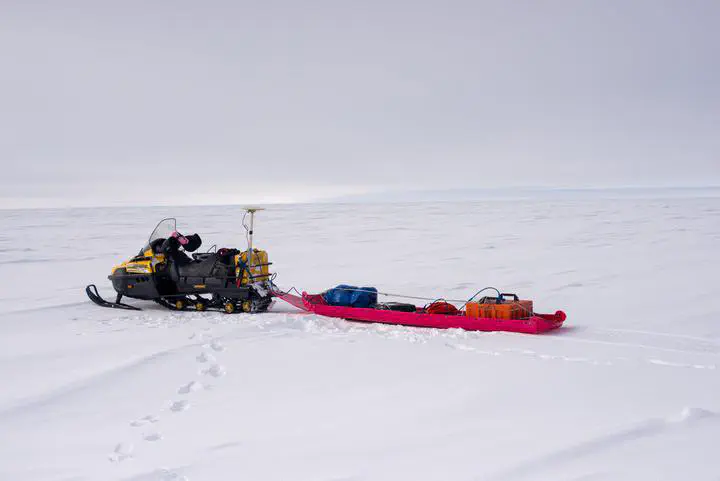2017 SPICEcore Meeting

I attended the annual meeting of the scientists who work on the South Pole Ice Core (SPICEcore) last week, which was a great opportunity to learn about all the work that people are doing using the core. This meeting was held at the University of Washington, September 19-20, 2017, and had scientists from throughout the US in attendance.
As lead PI for the upstream South-Pole project, Michelle Koutnik gave an update on our progress to the community. After some work over the summer, it was great to see a lot of our results coming together into a cohesive story. The most exciting result so far is that the shallow radar data, in conjunction with layers dated in SPICEcore, show that the current pattern of accumulation explains ~60% of the variance in layer thickness in SPICEcore. This result seems to suggest stable flow upstream of the South Pole for the past several thousand years! Here’s a short bit on the work I’ve helped with:
Last field season we resurveyed GPS stakes that Twit Conway and Michelle had put out the year before. This allowed us to determine the flowline of ice into SPICEcore, and set up our camp on this flowline. We then drove a lot of radar, both shallow (200mhz antenna, to ~100m depth) and deep (to the bed).
This summer, I went through and traced layers using the GSSI Radan software. These layers are reflections off of some kind of contrast in the ice; they could come from density variations or from other conductivity variations, e.g. chemical composition changes or an ash layer. I was able to follow 13 of these layers for a full 100km upstream along the flowline.
Looking just the variations in the first layer in map view, we can see that there is significant variation, likely reflecting variable snowfall or perhaps some redistribution of snow from wind. T.J. Fudge was then able to correlate some of these layers with conductivity variations measured directly in SPICEcore and a core we drilled at the camp 50km upstream. In conjunction with the velocities we measured, we can determine where the snow at different depths in the core fell, assuming no change in flow patterns. We can then determine if the observed variation in layer thickness correlates to the current patterns in accumulation, found using the shallow radar. Stay tuned for more results on this front!
